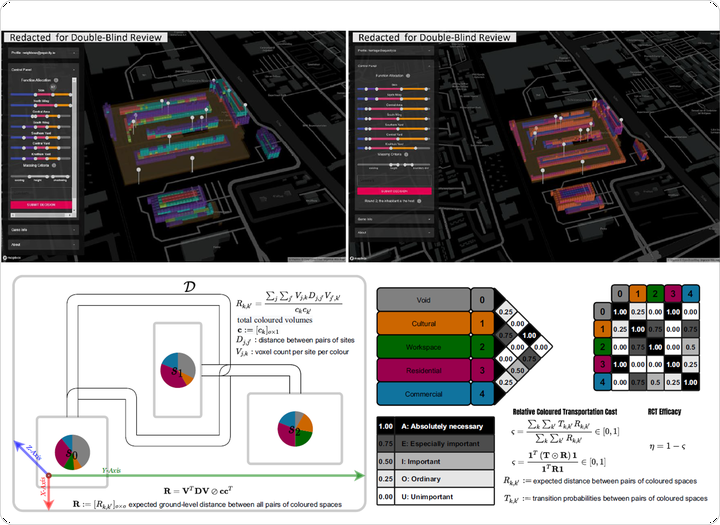EquiCity game; a mathematical serious game for participatory design of spatial configurations
Nature Scientific Reports , May 2024

Authors: Pirouz Nourian, Shervin Azadi, Nan Bai, Bruno de Andrade, Nour Abu Zaid, Samaneh Rezvani & Ana Pereira Roders
Abstract:
We propose a mathematical framework for developing social-choice games that are designed to mediate decision-making processes for city planning, urban area redevelopment, and architectural configuration of urban housing complexes. The proposed framework features a digital serious gaming approach for participatory design to support transparency and inclusion in the process of decision-making and ensure an equitable balance of sustainable development goals in spatial design outcomes. The mathematical process consists of a Markovian design machine for balancing the design decisions of actors, a massing configurator equipped with fuzzy logic and multi-criteria decision analysis, algebraic graph-theoretical accessibility evaluators, and automated solar-climatic evaluators using geospatial computational geometry. We demonstrate the effectiveness of the framework by implementing a multi-player online game that facilitates a participatory decision-making workshop for forming multi-functional building complexes by providing a generative configurator equipped with automated appraisal/scoring mechanisms for revealing the aggregate impact of alternatives. The EquiCity game empowers a group of decision-makers to reach a fair consensual spatial design by mathematically simulating many rounds of reasonable trade-offs between their decisions, with different levels of interest or control over various types of investments. The novelty of the framework is in its capability to encompass decision-making about the most idiosyncratic aspects of a site related to its heritage status and cultural significance to the most generic aspects such as balancing access to sunlight for the site while respecting ‘the right to sunlight’ of the neighbours of the site, ensuring coherence of the entire configuration with regards to a network of desired closeness ratings, the satisfaction of a programme of requirements, and intricately balancing individual development goals in conjunction with communal goals and environmental design codes.